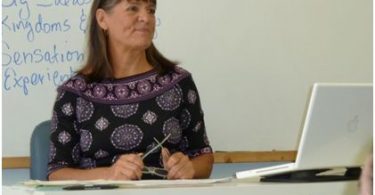The subsequent remedy which is prescribed when the previous one had acted beneficially and finished its action on the living organism is called a second prescription. It can be a repetition of the previous remedy or an antidote to the previous, a complementary to the previous or a placebo.1 This can be decided only by restudying the case, analyzing the effect caused by the first remedy in the patient. In some cases the second prescription may be an intercurrent or anti-miasmatic remedy, mostly when the indicated remedy no longer shows an action due to a miasmatic block. This is explained in the 6th observation of Kent, where there is only a short relief in symptoms due to the presence of a block which has to be removed for a cure.2
If after the first prescription the striking, peculiar and concomitant symptoms on which the prescription was based are altered or improved, it means that the remedy is correct and a simillimum. Here one must be patient enough to wait until the remedy finishes its action on the individual. As the remedy is correct there will be a steady improvement of the patient and the duration often depends on the nature of the disease and the susceptibility of the individual. The same remedy should be repeated once the case comes to a standstill state where there are no new symptoms and the patient feels he is better but not completely cured. This can be correlated to the 7th observation of Kent “full time amelioration yet no special relief”. This happens because the potency of the remedy was not strong enough. It should be repeated to complete the cure. Or, it is an ideal palliative for the condition, which is not completely curable. In some cases there will be complete absence of symptoms for a while and later the symptoms will reappear in the same intensity or in a lower or increased intensity. This can be compared to the 5th observation of Kent, “first amelioration followed by aggravation”. In such cases also, the same remedy should be repeated until and unless there are some alterations in generals or particulars.2d
In conditions where there will be a gap between the repetitions of the first remedy, the physician should give un-medicated pills rather than repeating the medicine too frequently. It includes cases where Kent’s 3rd and 4th observations are observed. This will prevent any interference with the action of the remedy and will avoid unwanted aggravations which result in more suffering to the patient.
There will be some cases where all the presenting symptoms disappear but a new set of symptoms are produced after the administration of the first remedy. In this case the physician should restudy the case so that he can confirm whether these are the appearance of old symptoms as mentioned in the 11th observation by Kent. In this case the physician has to wait, while giving placebo to the patient, as it is a good sign and it shows the remedy is in a curative direction. If this is not the case, then a thorough examination should be done to find out whether it is a medicinal aggravation or disease aggravation. If the new symptoms are related to the pathogenicity of the drug, this will be a medicinal aggravation. In this case the action of the remedy should be antidoted. This is similar to the 8th and 9th observations of Kent, where he mentions idiosyncratic patients who will prove every remedy they get.
If the new symptoms are due to the progress of the disease, the case should be retaken and a new totality should be formed as mentioned by Dr Hahnemann under aphorisms 162-170, and a simillimum should be given which is indicated by this new totality and new symptoms.3 This new remedy can be the same remedy, a complementary remedy, or a new remedy not related to the previous remedy. This can be compared to the 1st observation of Kent “A prolonged aggravation and final decline of patient”. This happens either when the condition is incurable and the remedy was deep acting, or as in the 12th observation, where the remedy was wrong and “the symptoms took a wrong direction.” Here also the effect of the previous remedy should be antidoted.2
In cases of acute exacerbations of chronic diseases the physician has to give an acute remedy initially, followed by a deep acting remedy which will help in improving the vital principle to take care of the predisposition or tendencies in the patient. Here the second remedy will be complementary to the first.1
Examples for this are:1,2,4
Belladonna and Calcarea Carb
Pulsatilla and Silicea
Aconite and Sulphur, etc.
This concept of administering a constitutional remedy for a long standing relief of symptoms is mentioned by Kent in his 6th observation. Sometimes while treating a chronic disease there will be changes in the presentation of the patient where the physician has to select some cycle of remedies which will be indicated in the process of cure.
Eg.: Sulphur – Calcaria Carb – Lycopodium
Sulphur – Sarasaparilla – Sepia
Pulsatilla – Silicea – Flouric Acid
These remedies often follow each other and rotate in this way in the treatment, but should not be prescribed without a clear indication.5
When it comes to changing the remedy, it is always better to make sure that the previous remedy has done all the good it can for the patient by giving higher potencies of the first remedy which had helped the patient previously.2,3 An intelligent physician should be always careful when it comes to second prescriptions, because most of the time a wrong second remedy spoils the case.
References:
- Roberts A Herbert, The Principles and Art of Cure By Homoeopathy, New Delhi, B Jain Publishers Pvt. Ltd, Low Price Edition, 2009
- Kent Tyler James, lectures on homoeopathic philosophy, New Delhi, B Jain Publishers Pvt. Ltd, reprint edition, 2009
- Hahnemann S, Organon of Medicine, New Delhi, B Jain Publishers Pvt. Ltd, sixth reprint edition, 1997
- Allen H. C, Keynotes and Characteristics with Comparisons with some of the Leading Remedies of Materia Medica, New Delhi, B Jain Publishers Pvt. Ltd, reprint edition,2008
Kent Tyler James, Lectures on Homoeopathic Materia Medica, New Delhi, B Jain Publishers Pvt. Ltd, reprint edit







I am suffering from eagle’s syndrome. Please help me doctor Dona. I live in Shillong, Meghalaya
You can contact the author by writing to email id [email protected]